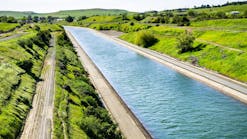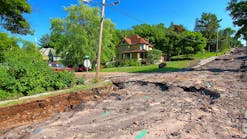Wastewater Management in Paris
Source Integrated Water Resource Management
The City of Love, with its magnificent boulevards, has a dark and dirty side hidden under its pavement—just like any other major city. More than 10 million people in the greater Paris area produce vast quantities of wastewater picked up by a sewer network several hundred miles long, purified by treatment plants and finally passed into the Seine River.
The Inter-departmental Syndicate for Wastewater Treatment in the Greater Paris Region (SIAAP) is responsible for this mammoth task. "One of the major challenges of this authority is to avoid flooding during heavy rainfalls," said Claire de Bouteiller of the French company ONDEO Systems. "Therefore, we have developed a software system for SIAAP that is able to predict floods so that the center can take corrective actions as quickly as possible."
Heavy rains have frequently overloaded the Paris sewer system in the past. The result: Large amounts of rainwater collect in the streets and flows untreated into the Seine River. "This also washes pollutants from streets and roofs into the river including such substances as zinc, motor oil, gasoline and heavy metals," says de Bouteiller. Contaminants from unusually heavy rainfalls over 20 years ago, for example, caused a local fish kill in the Seine River.
Today, a dense network of sensors in the sewer pipes continuously measures the water level and flow rate. "Based on this data, our software will then calculate a virtual model of the Paris sewer system," says the expert. "Together with weather forecast information, the computer can look into the future and generate a forecast that also localizes greater flooding problems up to six hours in advance during heavy rainfalls." The calculated data is forwarded to the control centers every 15 minutes. The control centers are then continuously informed about the current status of the sewer network and know hours in advance exactly which sites are threatened by flooding or overflows. They are then able to implement timely countermeasures, for example, by opening or closing floodgates to take the pressure off certain sections.
After a successful pilot phase in 2007, the system has been in operation since 2008 and has already proven itself. In July 2010 in Paris—like 20 years ago— when 95 mm of rain deluged the city in just three days, the Seine River did not become contaminated.
Source: Integrated Water Resource Management






